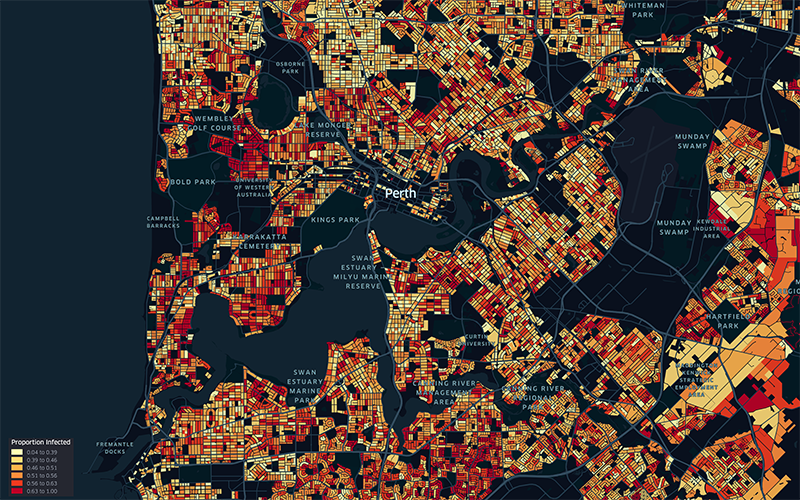Search

News & Events
Sophisticated new modelling suggests keeping mask mandate could prevent 147,000 COVID-19 casesWA’s current Omicron COVID-19 outbreak could jump by 147,000 cases if mask mandates are abandoned before the Easter long weekend, according to sophisticated new modelling.

News & Events
New study identifies African ‘hotspot’ for highly infectious diseasesA regional corner of Africa is a hotspot for cases of HIV, tuberculosis and malaria, prompting researchers to call for targeted health support rather than a national response.
Research
Risk factors associated with post-tuberculosis sequelae: a systematic review and meta-analysisPost-tuberculosis (TB) sequelae present a significant challenge in the management of TB survivors, often leading to persistent health issues even after successful treatment. Identifying risk factors associated with post-TB sequelae is important for improving outcomes and quality of life of TB survivors. This systematic review and meta-analysis aims to identify risk factors associated with long-term physical sequelae among TB survivors.
Research
Individual variation in vaccine immune response can produce bimodal distributions of protectionThe ability for vaccines to protect against infectious diseases varies among individuals, but computational models employed to inform policy typically do not account for this variation. Here we examine this issue: we implement a model of vaccine efficacy developed in the context of SARS-CoV-2 in order to evaluate the general implications of modelling correlates of protection on the individual level.
Research
Cholera risk in Lusaka: A geospatial analysis to inform improved water and sanitation provisionUrbanization combined with climate change are exacerbating water scarcity for an increasing number of the world’s emerging cities. Water and sanitation infrastructure, which in the first place was largely built to cater only to a small subsector of developing city populations, is increasingly coming under excessive strain.
Research
Association between mental health workforce supply and clusters of high and low rates of youth suicide: An Australian study using suicide mortality data from 2016 to 2020Abstract: To examine the association between mental health workforce supply and spatial clusters of high versus low incidence of youth suicide.
Research
Socio-demographic correlates of unhealthy lifestyle in Ethiopia: a secondary analysis of a national surveyMultiple lifestyle risk factors exhibit a stronger association with non-communicable diseases (NCDs) compared to a single factor, emphasizing the necessity of considering them collectively. By integrating these major lifestyle risk factors, we can identify individuals with an overall unhealthy lifestyle, which facilitates the provision of targeted interventions for those at significant risk of NCDs. The aim of this study was to evaluate the socio-demographic correlates of unhealthy lifestyles among adolescents and adults in Ethiopia.
Research
A modelling approach to estimate the transmissibility of SARS-CoV 2 during periods of high, low, and zero case incidenceAgainst a backdrop ofwidespread global transmission, a number of countries have successfully brought large outbreaks of COVID-19 under control and maintained near-elimination status. A key element of epidemic response is the tracking of disease transmissibility in near real-time. During major out-breaks, the effective reproduction number can be estimated froma time-series of case, hospitalisation or death counts. In low or zero incidence settings, knowing the potential for the virus to spread is a response priority.
Research
Spatio-temporal dynamics of three diseases caused by Aedes-borne arboviruses in MexicoThe intensity of transmission of Aedes-borne viruses is heterogeneous, and multiple factors can contribute to variation at small spatial scales. Illuminating drivers of heterogeneity in prevalence over time and space would provide information for public health authorities. The objective of this study is to detect the spatiotemporal clusters and determine the risk factors of three major Aedes-borne diseases, Chikungunya virus, Dengue virus, and Zika virus clusters in Mexico.
Research
A Journey from Wild to Textbook Data to Reproducibly Refresh the Wages Data from the National Longitudinal Survey of Youth DatabaseTextbook data is essential for teaching statistics and data science methods because it is clean, allowing the instructor to focus on methodology. Ideally textbook datasets are refreshed regularly, especially when they are subsets taken from an ongoing data collection.
